- Home
- Alison Weir
Elizabeth of York Page 11
Elizabeth of York Read online
Page 11
Mancini believed, probably correctly, that there was already little love lost between Gloucester and the Queen and her faction, and the events that would now unfold gave him no cause to doubt that. Edward IV, though he strengthened the monarchy and restored its prestige, was fatally unable to unite the two power centers he had created—Gloucester and the Wydevilles. There was enmity too between the Queen’s son, Dorset, and William, Lord Hastings, of which Edward had been aware. “At the command and entreaty of the King, who loved each of them, they had been reconciled two days before he died, yet there still survived a latent jealousy.”13 That jealousy was fueled by Hastings taking Elizabeth Shore as his mistress as soon as Edward IV was dead. During Edward’s lifetime he had been “sore enamored” of her, yet held back, “either for reverence or for a certain friendly faithfulness” to his master.14 Dorset had wanted her too; now he was even more incensed against Hastings.
It was inevitable therefore that Edward IV’s death would spark a struggle for control of the government and the young King. Edward V, having been under the influence of his mother’s faction from infancy, was unlikely to be well disposed toward anyone who opposed them, and he would come of age in three years’ time, so his wishes would be influential.
Significantly, the Wydevilles did not send to inform Gloucester of his brother’s death, no doubt because of their intention to exclude him from the regency government; he learned of it from Lord Hastings, Edward IV’s loyal councilor and friend, who “was hostile to the entire kin of the Queen, on account of [his rivalry with] the Marquess [of Dorset].” He advised the Duke that the late King, on his deathbed, had “committed to him only [his] wife, children, goods, and all that ever he had,”15 and urged him to hasten to the capital “with a strong force,” and to take the young king “under his protection and authority” on the way.16
Gloucester was unwilling to tolerate rule by the hated Wydevilles, and he may have feared the consequences to himself if they remained in control.17 He immediately took Hastings’s advice and rode south to meet his kinsman, Henry Stafford, Duke of Buckingham, who was his natural ally. Like Hastings, “Harre Bokenham” (as he signed himself) hated the Queen’s party,18 and with good cause: brought up in Elizabeth Wydeville’s household, he had been forced against his will and aristocratic instincts to marry her sister Katherine.19 The young Elizabeth probably knew Buckingham quite well; he was her kinsman and her uncle by marriage, and she had danced with him at court. With Gloucester, Hastings, and Buckingham allied in a coalition to bring down the unpopular Wydevilles, the stage was set for a fatal power struggle.
One of the chief sources for the events that unfolded next was Dominic Mancini. Some recent historians have questioned his credibility as an objective source, asserting that he was swayed by anti-Wydeville propaganda. Yet he was clearly aware of the existence of such propaganda, and he also warmly praised Earl Rivers, the most influential of the Queen’s kin. An astute eyewitness, writing in December 1483 at the latest, he was close to the events of that year, even though his account of what happened before his arrival in England is flawed in places. John Argentine, Edward V’s physician, was one of Mancini’s sources, and he would hardly have conveyed a negative view of the Wydevilles, so his testimony could have counterbalanced the propaganda of Gloucester and others. Moreover, Mancini took a dim view of Gloucester, and so it is unlikely he accepted the duke’s propaganda at face value. He was not hampered by the political constraints imposed on English commentators,20 and thus less likely to be biased.
Mancini believed that the Wydevilles and Gloucester went in fear of each other. That the Wydevilles did fear the duke, and with cause, is borne out by subsequent events and the Queen’s response to them. If we reject Mancini’s rationale—that genuine fear of the Wydevilles drove Gloucester to act as he did next—then we might conclude that he was spurred by hatred or resentment, and the need to overthrow an unpopular faction bent on staying in power. Had Gloucester liked and approved of the Wydevilles, and had no cause to fear them, there was no reason he could not have shared power with them. But as a prince of the blood royal and the second-highest-ranking duke in the realm (after Edward V’s younger brother, the Duke of York), he clearly agreed with Hastings, Buckingham, and others that the Wydevilles were not fit to have control of the King and the government of the realm.
All Gloucester’s acts, from the time he learned of his brother’s death, display a strength and consistency of purpose at odds with any theory that he was responding to events rather than driving them.21 In light of that, we must also consider a far darker scenario: that he was driven by hatred, and by ambition that had either surfaced or been born when an opportune moment presented itself. Mancini says that from the first “there were those who were not unaware of [Gloucester’s] ambition and cunning, and who had misgivings about where they would lead.” The Queen certainly shared these misgivings. If Gloucester hated her and her faction sufficiently to seek their overthrow, it is possible that his enmity extended to her son, the young king.
He now wrote to the council, reminding them “he had been loyal to his brother Edward” and assuring them “he would be equally loyal to his brother’s son, and to all his brother’s issue, even female, if, which God forfend, the youth should die. He would expose his life to every danger that the children might endure in their father’s realm.”22 Already eventualities had occurred to him. He also wrote “most loving letters” to the Queen, to console her in her loss, declaring “his carefulness and natural affection toward his brother’s children.”23 But his letter did not allay her fears, or divert her and her faction from their determination to bar Gloucester from taking power.
On April 18, after lying in state at Westminster, Edward IV’s body was conveyed up the Thames to Windsor, and there, two days later, buried in the new St. George’s Chapel, “which he had reverently founded and built.”24 Elizabeth was not present. The funerals of kings were not attended by their female relations, who by custom mourned in privacy.
Meanwhile, Gloucester had hastened south. Although he had not yet been confirmed as Lord Protector and had no legal mandate to act as he did, he was determined to seize the person of the young king as he was taken to London by his uncle, Earl Rivers; his half brother, Sir Richard Grey; Sir Thomas Vaughan, his chamberlain; and Sir Richard Haute, the Queen’s kinsman, with an escort of two thousand men. On April 29, with his forces bolstered by those of his ally, Buckingham, Gloucester intercepted the King’s party at Stony Stratford. The next day at dawn, after sharing a convivial meal with them, he suddenly seized Rivers, Grey, Vaughan, and Haute, who were afterward conveyed north and imprisoned at Sheriff Hutton Castle and Pontefract Castle. It was clear that this was the prelude to the overthrow of Wydeville rule. The lack of any outcry in response to Gloucester’s coup shows that he and his allies had calculated correctly that hatred of the Queen’s faction was widespread and deeply rooted. Evidently, many nobles approved of his decisiveness.25
Edward V was staunch in his defense of Rivers and the others, but he was overruled by Gloucester, who now saw firsthand that the King’s loyalty lay with his mother and her kin. That did not bode well for the future. The boy insisted that the government be entrusted to the Queen and the lords of the realm, doubtless meaning those of the Wydeville faction, but Buckingham answered “that it was not women’s place to govern the kingdom, but men’s, [and] if he hoped for anything from her, he should abandon it.”26
Elizabeth must have known about the political maneuvering going on around her; she may have known that her mother’s kin were not popular or liked by Gloucester, but her focus would probably have been on the imminent arrival of her brother in London and the coming coronation. It was a terrible shock, therefore, when news of Gloucester’s coup reached London “a little before midnight” on April 30.27 “The unexpectedness of the event horrified everyone.”28
Elizabeth would have seen how appalled the Queen was to hear that “the King her son was taken, her brother,
her son, and her other friends arrested and sent no man knows wist whither, to be done with God wot what.”29 At a stroke, Gloucester had undermined the power of the Wydevilles, whom he apparently seemed bent on destroying. He would soon be in London, and what would happen to them all then?
There was a flurry of panicked activity at Westminster. Immediately, the Queen and her remaining son, Dorset, “began collecting an army to defend themselves and to set free the young King from the clutches of the dukes. But when they had consulted certain nobles and others to take up arms, they perceived that men’s minds were not only irresolute but altogether hostile to themselves. Some even said openly that it was more just and profitable that the youthful sovereign should be with his paternal uncle than with his maternal uncles and uterine brothers.”30
Elizabeth Wydeville, “fearing the sequel of this business,”31 decided there was one course of action open to her—one she had taken before in a crisis. That same night,32 she resolved to take sanctuary at Westminster, “to the intent she might deliver her other children from the present danger.”33 Thus, “in great fright and heaviness, bewailing her child’s ruin, her friends’ mischance, and her own infortune, damning the time that ever she dissuaded the gathering of power about the King, she got herself with all haste possible, with her daughters and her younger son, out of the Palace of Westminster, in which she then lay,”34 and fled into sanctuary at Westminster Abbey. Her youngest child, two-year-old Bridget, was not well, and may have been brought to Westminster from the royal chambers in the Royal Wardrobe near Baynard’s Castle, for after her father’s death she had been “sick in the said Wardrobe.”35
The Queen and “all her children and company were registered as sanctuary persons.”36 John Eastney, Abbot of Westminster since 1474 and a patron of Caxton, had stood godfather to Prince Edward back in 1470; he took them under his protection, and did not demur at the Queen once more “lodging herself and her company in the abbot’s palace,” Cheyneygates,37 where the little Elizabeth had stayed in sanctuary with her mother and sisters in 1470–71. They were joined in the sanctuary by Dorset and Lionel Wydeville, Bishop of Salisbury.38 Dorset, who had forsaken his post as Constable of the Tower, escaped from sanctuary some weeks later, evading the soldiers and dogs that were after him, and went into hiding.39
This must have been a traumatic and frightening time for Elizabeth, with her father so lately dead and her mother and kinsmen convinced that Richard of Gloucester intended harm to them all. Helpless herself, she must have known that, in his eyes, she was inextricably linked to her mother’s party, and therefore an enemy. Maybe she hated him for what he had done to her family.
Her mother was in a state of near collapse. She had fled the palace precipitately, leaving orders for her stuff to be conveyed across to the abbey after her. When Thomas Rotherham, Archbishop of York, arrived at the sanctuary in the small hours of that morning, bringing the Great Seal of England to the Queen, he found “much heaviness, rumble, haste, and busyness” surrounding her, for “the carriage and conveyance of her stuff” was already in hand. The Archbishop was astounded to see “chests, coffers, packs, fardels, trussed all on men’s backs, no man unoccupied, some loading, some coming, some going, some discharging, some coming for more, some carrying more than they ought the wrong way, and some breaking down the walls to bring in the next way.” The scene was total chaos, but amid all the flurry “the Queen sat alone, a-low on the rushes, all desolate and dismayed,” knowing that there would be no Edward IV to rescue her and her children from sanctuary this time. “The Archbishop comforted [her] in the best manner he could, showing her that he trusted the matter was nothing so sore as she took it for,” and saying he had been reassured by a message sent to him by Lord Hastings.
“Ah, woe worth him,” the Queen cried, “for he is one of those that laboreth to destroy me and my blood.”
“Madam,” Rotherham replied, “be ye of good cheer, for I assure you, if they crown any other king than your son, we shall on the morrow crown his brother.” And he handed her the Great Seal, to hold on behalf of Edward V.40
But when the Archbishop left at dawn, and returned to York Place, his London residence, he saw through “his chamber window all the Thames full of boats of the Duke of Gloucester’s servants, watching that no man should go into sanctuary, nor none pass unsearched.”41 Elizabeth would soon realize that she was now a virtual prisoner, unable to leave the abbey. And this was only the beginning of her misfortunes.
On May 4 a black-clad Gloucester rode into London with the young King, who was wearing royal mourning of “blue velvet” for his father, and it was noted with approval by the people that the duke showed his sovereign much respect and honor. But he and Buckingham “were seeking at every turn to arouse hatred against the Queen’s kin, and to estrange public opinion from her relatives,” and “they took especial pains to do so the day they entered the City. For ahead of the procession they sent four wagons loaded with weapons bearing the devices of the Queen’s brothers and sons, besides criers to make generally known that these arms had been collected by the duke’s enemies so as to attack and slay [him].”42 The weapons had, in fact, been stored against war with the Scots.
Elizabeth, who cherished “unbounded love” for her siblings,43 must have been sad not to be reunited with her brother, Edward V. She may have had fears for him. But he was effortlessly winning the love of his subjects. Mancini, who may well have seen the young king at this time, says that “in word and deed, he gave so many proofs of his liberal education, of polite, nay, rather scholarly attainments far beyond his age. He had such dignity in his whole person, and in his face such charm that, however much they might gaze, he never wearied the eyes of beholders.”
Outwardly, all seemed propitious for the new reign, and it might have appeared that the Queen’s flight into sanctuary had been too precipitate. Gloucester saw to it that the laws of the realm were enforced in Edward V’s name; coins were struck bearing the boy’s image, “and all royal honors were paid to him.”44 Given that the duke was now firmly in control of the young king, the council had no choice but to recognize him as protector, although they refused to proceed against Rivers, Grey, and the rest because Gloucester had not—at the time—had the authority to arrest them; nevertheless, the men remained in prison. A new date, June 24,45 was set for the coronation. Everyone, says Croyland, “was looking forward to the peace and prosperity of the kingdom,” and Lord Hastings “was overjoyed at this new world, saying that nothing more had happened than the transfer of the rule of the kingdom from two of the Queen’s relatives to two of the King’s.” His jubilation was premature, for the council had made it clear that the office of Lord Protector would still lapse with the coronation, and Gloucester knew that the days of his power might be numbered.
Hastings must have been a man of limited imagination to so glibly pass over the tragedies that had overtaken Elizabeth and her family. Whether Gloucester was a threat or not, her mother had compelling reasons to believe that he was, and the atmosphere in sanctuary must have been heavy with grief and anxiety, with no end to it in view. It must have been poignant living in such close proximity to the palace where they had spent so much time in former years, heedless of the events that were to overtake them. And although they were housed in some luxury, as guests of the abbot, they were dependent on him for their security, and before long for the very necessities of life. On May 7, Edward IV’s executors declined to administer his will, on the grounds that while the Queen held his daughters in sanctuary, his bequests to them could not be carried out. Accordingly, the Archbishop of Canterbury placed the late king’s goods under sequestration. Elizabeth had been deprived not only of her freedom, but of her dowry, and the Queen and her children had been rendered penniless.46
The contemporary Paston Letters contain a complaint about the “great cost” of living in sanctuary. There is no mention of a butcher like John Gould supplying meat during this second sojourn, and any store of money that Elizabet
h Wydeville had brought with her would rapidly have dwindled, because the merchants who came to sell to sanctuary dwellers often charged “right unreasonable” prices.47 It must have been a humbling experience for the Queen and her daughters to be obliged to presume upon the abbot’s charity.
They dared not leave Cheyneygates, even though the boundaries of the Westminster sanctuary extended farther, for fear of being seized; yet anyone could enter to see them, which must have been a further source of anxiety. Although sanctuaries were regarded as holy places to be treated with reverence, there were notorious examples of their being breached, as had happened in 1471, when Edward IV, brandishing his sword, entered the Abbey of Tewkesbury and dragged out the Lancastrians who had sought sanctuary there.48 The sanctuary at Westminster had long enjoyed the patronage and protection of English kings, who regarded it as an outward symbol of royal power and mercy, but Mancini observed that things had declined since the Queen sought sanctuary under Henry VI, and that “sanctuaries are of little avail against the royal authority.”
Little is recorded about the lives of those in sanctuary. Elizabeth was effectively a guest in a monastery, her life governed by bells and prayer. It cannot have been a happy existence for a bereaved girl of seventeen—indeed it was perhaps a constant ordeal—but the presence of her younger siblings would have enlivened her days and kept her occupied.
Among the luggage the Queen had brought with her was at least one book—a devotional manuscript, “Letters and Collects for Vigils of Saturday before Easter and Pentecost,” dating from around 1300, with later additions. In the margin of the first folio it is inscribed: “Westminster Abbey. Elizabeth dei gratia. To my good friend Mortimer.” In the fourth folio is the dedication: “To the victorious and triumphant King Henry,” which must have been written after August 1485. The last folio bears the words “Westminster Abbey.” It is a reasonable assumption that the book was owned and annotated by Elizabeth Wydeville when she was in sanctuary, and that the said Mortimer—who was perhaps Sir John Mortimer of Kyre49—supported her in some way while she was there. Tradition has it that she gave the book to her daughter Elizabeth, for either could have written the dedication “To the victorious and triumphous King Henry [VII].”50

 Richard III and the Princes in the Tower
Richard III and the Princes in the Tower Britain's Royal Families: The Complete Genealogy
Britain's Royal Families: The Complete Genealogy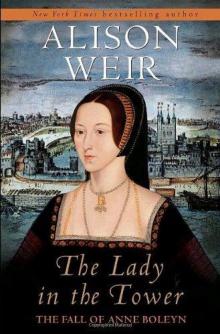 The Lady in the Tower: The Fall of Anne Boleyn
The Lady in the Tower: The Fall of Anne Boleyn Six Wives of Henry VIII
Six Wives of Henry VIII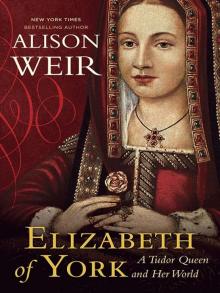 Elizabeth of York: A Tudor Queen and Her World
Elizabeth of York: A Tudor Queen and Her World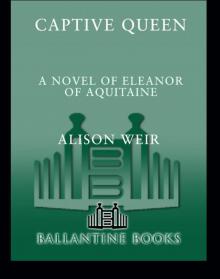 Captive Queen
Captive Queen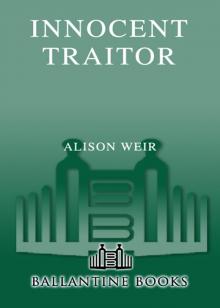 Innocent Traitor
Innocent Traitor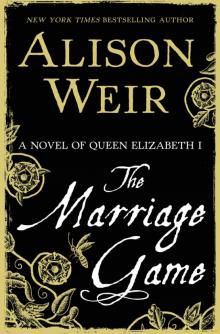 The Marriage Game
The Marriage Game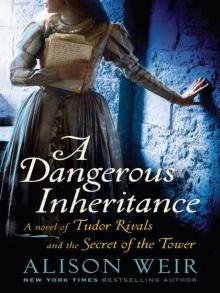 A Dangerous Inheritance
A Dangerous Inheritance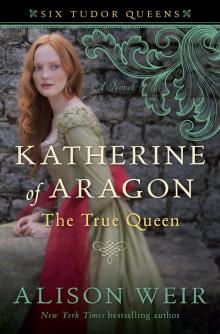 Katherine of Aragón: The True Queen
Katherine of Aragón: The True Queen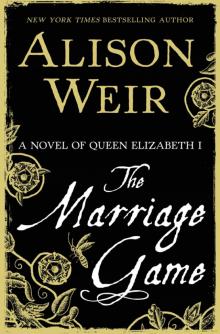 The Marriage Game: A Novel of Queen Elizabeth I
The Marriage Game: A Novel of Queen Elizabeth I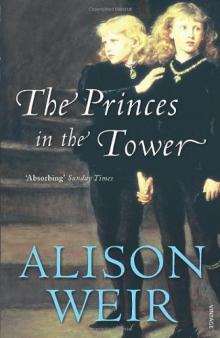 Princes in the Tower
Princes in the Tower Anne Boleyn: A King's Obsession
Anne Boleyn: A King's Obsession Traitors of the Tower
Traitors of the Tower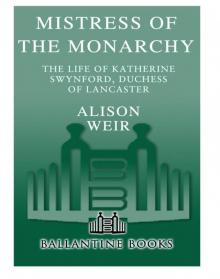 Mistress of the Monarchy: The Life of Katherine Swynford, Duchess of Lancaster
Mistress of the Monarchy: The Life of Katherine Swynford, Duchess of Lancaster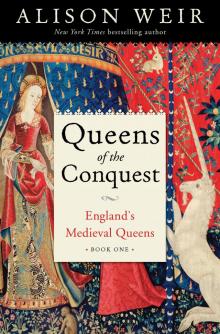 Queens of the Conquest: England’s Medieval Queens
Queens of the Conquest: England’s Medieval Queens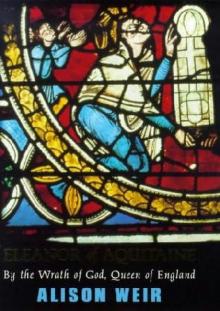 Eleanor of Aquitaine: A Life
Eleanor of Aquitaine: A Life Mary, Queen of Scots, and the Murder of Lord Darnley
Mary, Queen of Scots, and the Murder of Lord Darnley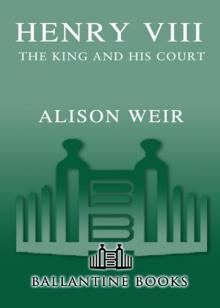 Henry VIII: The King and His Court
Henry VIII: The King and His Court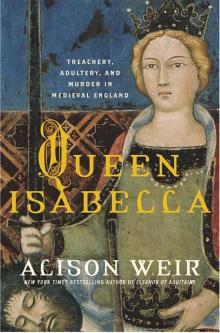 Queen Isabella: Treachery, Adultery, and Murder in Medieval England
Queen Isabella: Treachery, Adultery, and Murder in Medieval England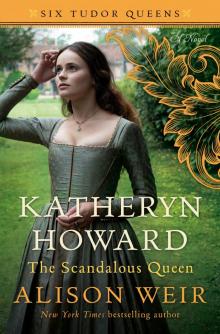 Katheryn Howard, the Scandalous Queen
Katheryn Howard, the Scandalous Queen Arthur- Prince of the Roses
Arthur- Prince of the Roses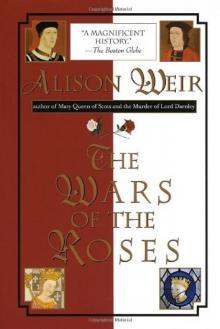 The Wars of the Roses
The Wars of the Roses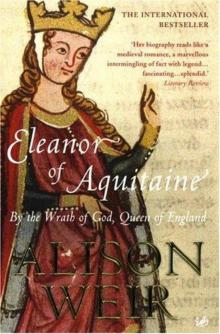 Eleanor of Aquitaine: By the Wrath of God, Queen of England
Eleanor of Aquitaine: By the Wrath of God, Queen of England Mary Boleyn: The Great and Infamous Whore
Mary Boleyn: The Great and Infamous Whore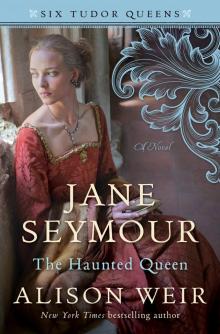 Jane Seymour: The Haunted Queen
Jane Seymour: The Haunted Queen Anna of Kleve, the Princess in the Portrait
Anna of Kleve, the Princess in the Portrait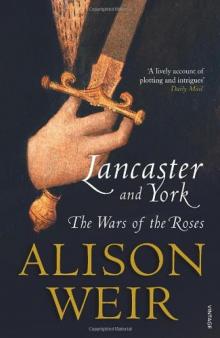 Lancaster and York: The Wars of the Roses
Lancaster and York: The Wars of the Roses The Grandmother's Tale
The Grandmother's Tale The Princess of Scotland (Six Tudor Queens #5.5)
The Princess of Scotland (Six Tudor Queens #5.5)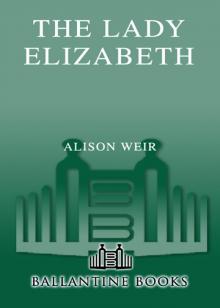 The Lady Elizabeth
The Lady Elizabeth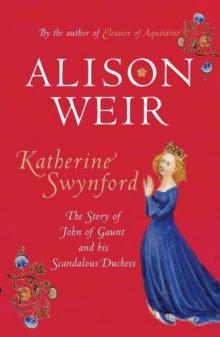 Katherine Swynford: The Story of John of Gaunt and His Scandalous Duchess
Katherine Swynford: The Story of John of Gaunt and His Scandalous Duchess The Curse of the Hungerfords
The Curse of the Hungerfords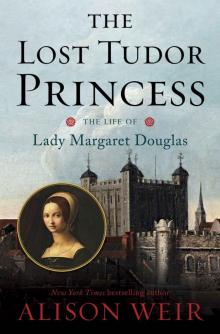 The Lost Tudor Princess: The Life of Lady Margaret Douglas
The Lost Tudor Princess: The Life of Lady Margaret Douglas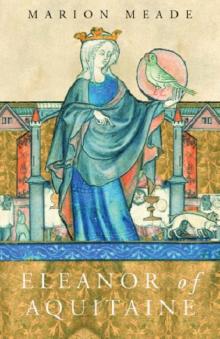 Eleanor of Aquitaine
Eleanor of Aquitaine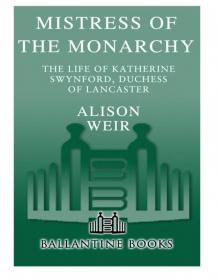 Mistress of the Monarchy
Mistress of the Monarchy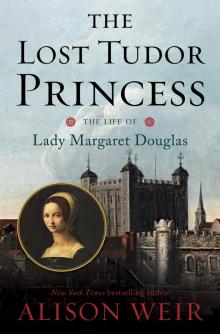 The Lost Tudor Princess
The Lost Tudor Princess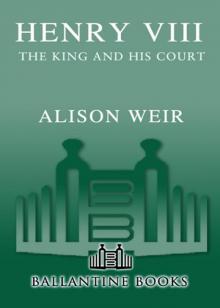 Henry VIII
Henry VIII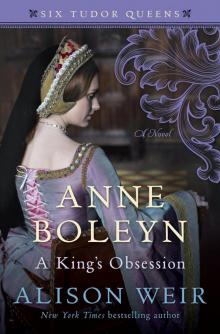 Anne Boleyn, a King's Obsession
Anne Boleyn, a King's Obsession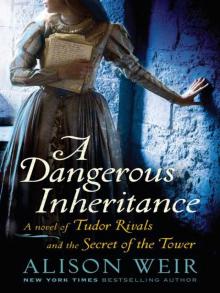 A Dangerous Inheritance: A Novel of Tudor Rivals and the Secret of the Tower
A Dangerous Inheritance: A Novel of Tudor Rivals and the Secret of the Tower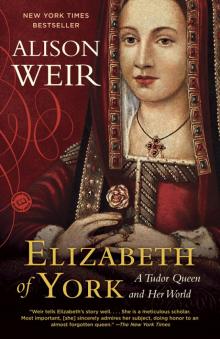 Elizabeth of York
Elizabeth of York Katherine of Aragon, the True Queen
Katherine of Aragon, the True Queen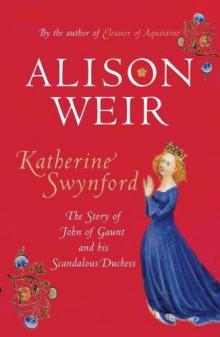 Katherine Swynford
Katherine Swynford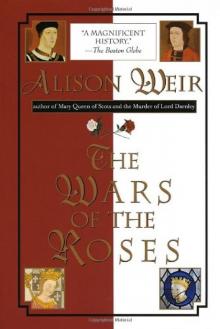 Wars of the Roses
Wars of the Roses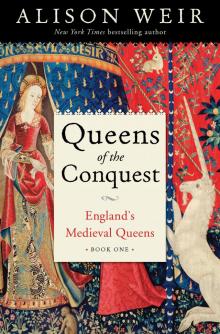 Queens of the Conquest
Queens of the Conquest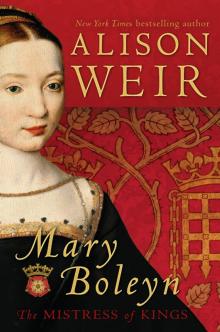 Mary Boleyn
Mary Boleyn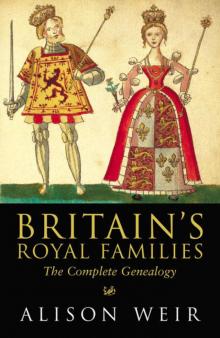 Britain's Royal Families
Britain's Royal Families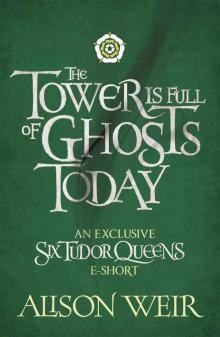 The Tower Is Full of Ghosts Today
The Tower Is Full of Ghosts Today Life of Elizabeth I
Life of Elizabeth I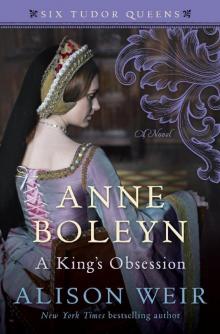 Anne Boleyn A King's Obssession
Anne Boleyn A King's Obssession Lancaster and York
Lancaster and York Jane Seymour, the Haunted Queen
Jane Seymour, the Haunted Queen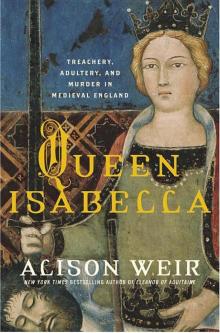 Queen Isabella
Queen Isabella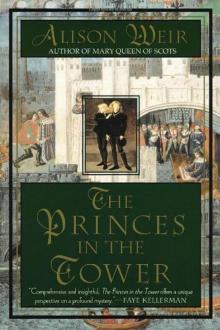 The princes in the tower
The princes in the tower